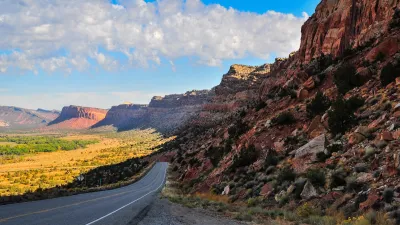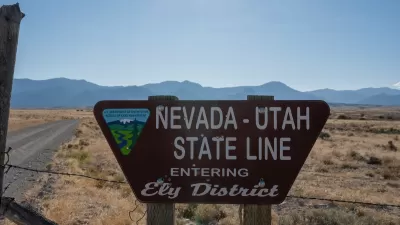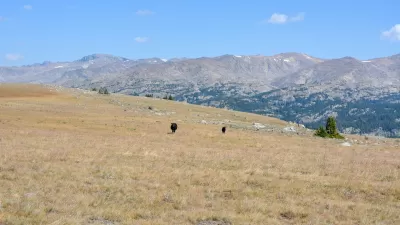A looming budget cut has led the Forest service to hit pause on seasonal staff hires and hiring external candidates for permanent agency positions, prompting concerns about the agency’s ability to achieve its mission.

The U.S. Forest Service recently announced a hiring freeze for seasonal staff and announced it won’t be hiring external candidates for any position within the agency in the 2025 fiscal year, according to an article from High Country News, in collaboration with Vox. The decision comes as the agency faces a “looming budget cut” after a recent spending bill passed by the U.S. House of Representatives granted around half a billion dollars less than the Forest Service requested. “All of this, combined with recent cost-of-living increases for staff, means that the agency is feeling strapped for cash,” writes High Country News contributing editor Nick Bowlin. The situation has sent ripples of shock across the nation, raising concerns that thousands of people will be left out of work and that essential conservation and biodiversity work will be at risk. The freeze does not apply to the 11,000 temporary firefighting positions the Forest Service hires annually.
Bowlin explains the scale of the problem: “Americans visit hiking and camping areas managed by the U.S. Forest Service more than 150 million times each year …. The agency relies on a large, often underappreciated army of seasonal or temporary workers who clean bathrooms and campgrounds, empty trash cans, maintain trails, welcome people at visitor centers and do critical research work on the environment.” Without seasonal workers, those tasks will have to be performed by full-time staff, pulling them away from their core duties, or left undone entirely. “And since seasonal work is a common steppingstone to a permanent role, many temporary workers who hoped for a career in public-land management now find themselves at a loss.” Also at risk is the skill and knowledge of long-time seasonal workers who may not return if and when the freeze is lifted.
The High Country News article outlines the extent of work performed by seasonal staff not only to maintain hiking and camping areas but also to clear brush and trees to reduce wildfire risk, manage wildlife habitat, and more. It also highlights interviews and concerns from forestry and conservation advocates, seasonal and permanent Forest Service employees, and public-private partners.
FULL STORY: The Forest Service is cutting its seasonal workforce and public lands will suffer

Study: Maui’s Plan to Convert Vacation Rentals to Long-Term Housing Could Cause Nearly $1 Billion Economic Loss
The plan would reduce visitor accommodation by 25,% resulting in 1,900 jobs lost.

North Texas Transit Leaders Tout Benefits of TOD for Growing Region
At a summit focused on transit-oriented development, policymakers discussed how North Texas’ expanded light rail system can serve as a tool for economic growth.

Why Should We Subsidize Public Transportation?
Many public transit agencies face financial stress due to rising costs, declining fare revenue, and declining subsidies. Transit advocates must provide a strong business case for increasing public transit funding.

How Community Science Connects People, Parks, and Biodiversity
Community science engages people of all backgrounds in documenting local biodiversity, strengthening connections to nature, and contributing to global efforts like the City Nature Challenge to build a more inclusive and resilient future.

Alabama: Trump Terminates Settlements for Black Communities Harmed By Raw Sewage
Trump deemed the landmark civil rights agreement “illegal DEI and environmental justice policy.”

Dear Tesla Driver: “It’s not You, It’s Him.”
Amidst a booming bumper sticker industry, one writer offers solace to those asking, “Does this car make me look fascist?”
Urban Design for Planners 1: Software Tools
This six-course series explores essential urban design concepts using open source software and equips planners with the tools they need to participate fully in the urban design process.
Planning for Universal Design
Learn the tools for implementing Universal Design in planning regulations.
City of Santa Clarita
Ascent Environmental
Institute for Housing and Urban Development Studies (IHS)
City of Grandview
Harvard GSD Executive Education
Toledo-Lucas County Plan Commissions
Salt Lake City
NYU Wagner Graduate School of Public Service





























